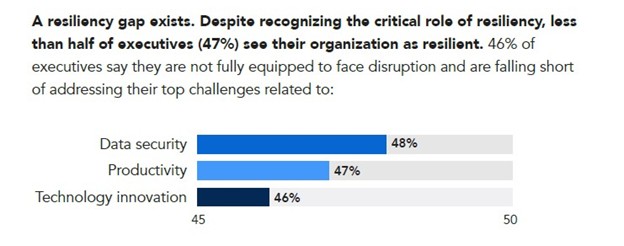You’re running an organization, and everything seems fine. Sales are steady, customers are happy, and your team is operating like a well-oiled machine. You finally feel like you can breathe.
Then—bam! A supplier suddenly goes out of business. Before you can even process that, a new regulation rolls in, forcing you to overhaul half your processes. Just as you start handling those challenges, your biggest competitor launches a game-changing product that makes yours look a little… outdated.
Welcome to modern business, where challenges pop up faster than you can handle them, and reacting in real-time feels like a never-ending game of Whack-a-Mole.
But here’s the thing: you don’t have to live in constant firefighting mode. This is where Business Analysts (BAs) come in—not as superheroes (though they come close), but as strategic thinkers who spot risks before they explode into full-blown crises.
Instead of constantly reacting to problems, BAs proactively identify weak spots, build smarter strategies, and help organizations turn disruptions into opportunities.
Let’s look at how they do it—without the usual corporate jargon.
Most executives view resiliency as a critical business imperative. 97% of executives believe resiliency is very or somewhat important, and 87% said it helps them prepare for unforeseen events.
Spotting Trouble Before It Hits: The Business Analyst’s Superpower
Every organization has weaknesses, but not all of them are obvious. Some are glaring (like a supply chain that depends on one supplier halfway across the world, and you only realize it’s a problem when a shipping delay throws your entire operation into chaos). In contrast, others lurk beneath the surface (like outdated processes that no one questions because “that’s how we’ve always done it”).
And then there are the risks you don’t even know exist—until it’s too late. Maybe a key customer is quietly testing out a competitor, a regulatory change is about to make your data practices non-compliant, or your most significant revenue stream is based on a market trend fading faster than anyone wants to admit. The point is that just because an organization smoothly runs today doesn’t mean it’s built to last tomorrow.
BAs are trained to detect these risks. They don’t just look at what’s working now—they dig into the cracks before they turn into sinkholes.
Here’s how:
- Talking to people (yes, really) – The best insights don’t always come from reports; they come from employees on the front lines. BAs dig deep into processes, listening to concerns that leadership might have overlooked. For example, if a sales team keeps losing deals to a competitor with better pricing, a BA might investigate whether procurement inefficiencies are increasing costs.
- Playing detective with data – Trends don’t lie. BAs analyze organizational data to identify patterns, whether it’s declining customer retention, supply chain bottlenecks, or rising operational costs. For instance, a BA at a logistics company might notice a steady increase in delivery delays. They dig into the data and discover that an outdated route-planning system is causing inefficiencies. Fixing the software prevents further delays and saves the company money.
- Using strategic frameworks to connect the dots – Tools like SWOT analysis (which evaluates strengths, weaknesses, opportunities, and threats) and PESTLE analysis (which assesses external business influences like regulatory changes) give BAs a structured way to anticipate risks and proactively develop strategies to address them. For instance, a PESTLE analysis might reveal that upcoming government regulations will require stricter data security policies—giving the company time to prepare instead of scrambling at the last minute.
The result? An organization ready for anything—even that next “unprecedented event” that headlines keep talking about.

Risk Management: Because “Hope” Is Not a Strategy
Once a BA identifies risks, the next step is to act. Spotting a problem without addressing it is like seeing your check engine light and deciding to ignore it. The real value comes from minimizing damage, adapting quickly, and keeping the organization moving forward.
This is where BAs bring their toolbox of risk management techniques—tracking threats, analyzing worst-case scenarios, and ensuring there’s a solid backup plan. Instead of constantly putting out fires, organizations can shift to a proactive “we saw this coming, and we’re ready” mindset.
Here’s how they do it:
The Risk Register: The Business World’s Emergency Contact List
A risk register is like an organization’s version of a “things that could go wrong” list—but instead of panicking, BAs use it to plan ahead. It includes:
- Potential risks (cyberattacks, regulatory changes, market downturns, etc.).
- Likelihood and impact (Is this a minor inconvenience or an organization-ending catastrophe?).
- Mitigation strategies (What’s Plan B? And C? And D?).
Example: BA at a healthcare company might use a risk register to track potential regulatory changes. If new laws require stricter patient data protections, having a mitigation plan means the company can proactively upgrade its systems rather than scrambling at the last minute.
Business Impact Analysis: Figuring Out Which Domino Falls First
Not all risks are created equal. A business impact analysis (BIA) helps organizations understand:
- Which operations are most critical to survival.
- How long the organization can function if a disruption happens.
- What steps can minimize damage.
Example: A manufacturing firm running a BIA might discover that a 24-hour delay in raw material delivery is manageable, but a 48-hour delay shuts down production entirely. That insight leads to contingency plans like securing backup suppliers or adjusting inventory levels.
Contingency Planning: Because Murphy’s Law Is a Real Thing
You know the saying, “Anything that can go wrong, will go wrong”? BAs take that to heart. They create contingency plans so that teams aren’t scrambling when disaster strikes—they’re executing a well-thought-out backup plan.
Example: A BA at a financial institution might develop a contingency plan for a cyberattack, outlining immediate response steps, alternative systems to use if primary ones go down, and communication strategies to maintain customer trust.
The best organizations don’t just plan for the best-case scenario. They prepare for the worst, making them far more resilient when things inevitably go sideways.
Lessons from the Real World: How Smart Organizations Stay Standing
Now that we’ve covered how BAs manage risk let’s examine real-world examples of businesses that have turned chaos into opportunity with the help of a solid BA strategy.
Case Study #1: A Retailer That Pivoted Before It Was Too Late
Before the rise of e-commerce, a major retail chain relied almost entirely on foot traffic. A BA team analyzed customer behavior and found that online searches for their products were skyrocketing—but their website wasn’t optimized for sales.
What they did:
- Mapped out declining in-store sales trends.
- Conducted competitor analysis on digital transformation.
- Helped the company develop an online storefront and optimize its inventory system based on digital demand.
The result? An organization that remained relevant instead of becoming a “Remember them?” case study.
Case Study #2: A Financial Firm That Dodged a Meltdown
A global financial institution was running on outdated processes and inefficient workflows. A team of BAs stepped in before inefficiencies led to significant financial losses.
What they did:
- Conducted process mapping to identify inefficiencies, revealing that 20% of employee time was spent on manual data entry that could be automated.
- Recommended automation and better reporting tools that provided real-time financial insights.
- Implemented new reporting structures that allowed leadership to spot financial risks sooner.
The result? Lower operational costs and faster, more informed decisions—without waiting for a crisis to force change.
The Secret to Long-Term Success? Never Stop Improving
Resilient organizations don’t just react to change—they anticipate it, adapt, and keep improving. Staying competitive isn’t about having a perfect plan (spoiler: there’s no such thing); it’s about continuously refining processes, strategies, and decision-making. That’s where Business Analysts shine. They don’t just help organizations survive disruptions—they help them evolve in ways that make future challenges more manageable.
With the right guidance, executives are confident about closing the resiliency gap. Most business leaders (88%) are confident about increasing resiliency in their companies in the future and presumably closing the gap. But to do so, their organization needs guidance in implementing an effective resiliency strategy (81%).
Here’s how BAs keep organizations moving forward instead of falling behind:
Embracing an Agile Mindset
BAs help organizations ditch outdated, rigid processes and adopt Agile working methods, where small, continuous improvements drive results over time. Instead of waiting for a significant overhaul, organizations adapt in real-time, refining workflows, products, and services as needs evolve.
Using Data to Stay One Step Ahead
Gut instincts have their place, but data leads to better decisions. BAs help organizations:
- Track key performance indicators (KPIs) to catch issues before they escalate.
- Use predictive analytics to forecast shifts in demand, customer behavior, and market trends.
- Make informed decisions based on facts, not just gut feelings or outdated assumptions.
Bridging the Gap Between Strategy and Reality
Many great organizational strategies fail in execution—not because they’re bad ideas, but because they’re not actionable. BAs translate leadership’s vision into concrete steps, ensuring teams have the tools, processes, and insights to turn strategy into measurable results.
Final Thoughts: A Business Analyst’s Job Is Never Done
Resilience isn’t just about surviving change—it’s about thriving. The best organizations aren’t the ones that never face problems (because, let’s be honest, that’s impossible). They anticipate issues, prepare for them, and come out stronger on the other side.
That’s exactly what Business Analysts help organizations do every single day.
So, if your organization is still crossing its fingers and hoping things don’t go wrong, maybe it’s time to bring in a BA.
Start by evaluating your current risk management strategies. Where are the gaps? What’s your Plan B for unexpected disruptions? If you’re not sure, a Business Analyst can help turn uncertainty into confidence—because the best organizations don’t just react to change; they thrive in it.
Jay Pugh, PhD
Dr. Jay Pugh is an award-winning leader, author, and facilitator with over 18 years of teaching and training experience. Currently serving as Head of Leadership Growth at Educate 360, he leads a robust team of external and internal facilitators who specialize in developing leadership capabilities within medium and large-scale businesses. His team works directly with business professionals, helping them become more effective leaders in their daily operations.
Dr. Pugh holds a Ph.D. in Instructional Management and Leadership, and his academic contributions include two published articles and a dissertation focusing on various educational topics. His extensive experience and academic background have established him as a respected voice in leadership development and educational management.

 New Horizons
New Horizons
 Project Management Academy
Project Management Academy
 Six Sigma Online
Six Sigma Online
 Velopi
Velopi
 Watermark Learning
Watermark Learning
 Login
Login





 New Horizons
New Horizons
 Project Management Academy
Project Management Academy
 Velopi
Velopi
 Six Sigma Online
Six Sigma Online
 Watermark Learning
Watermark Learning